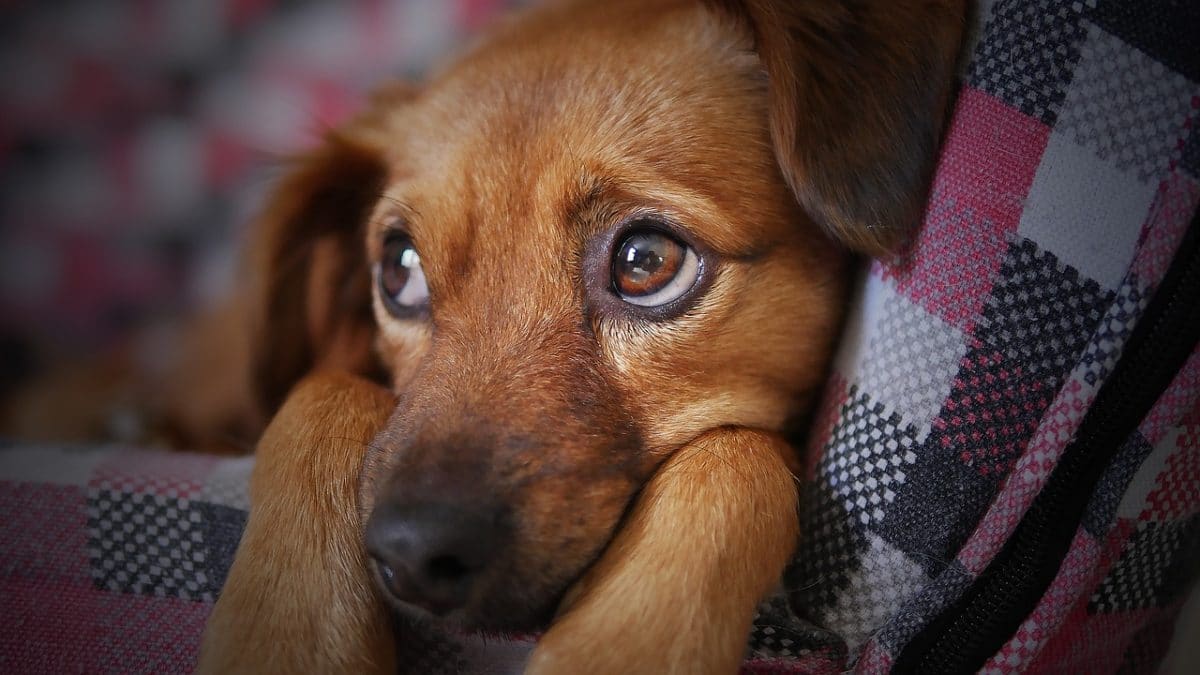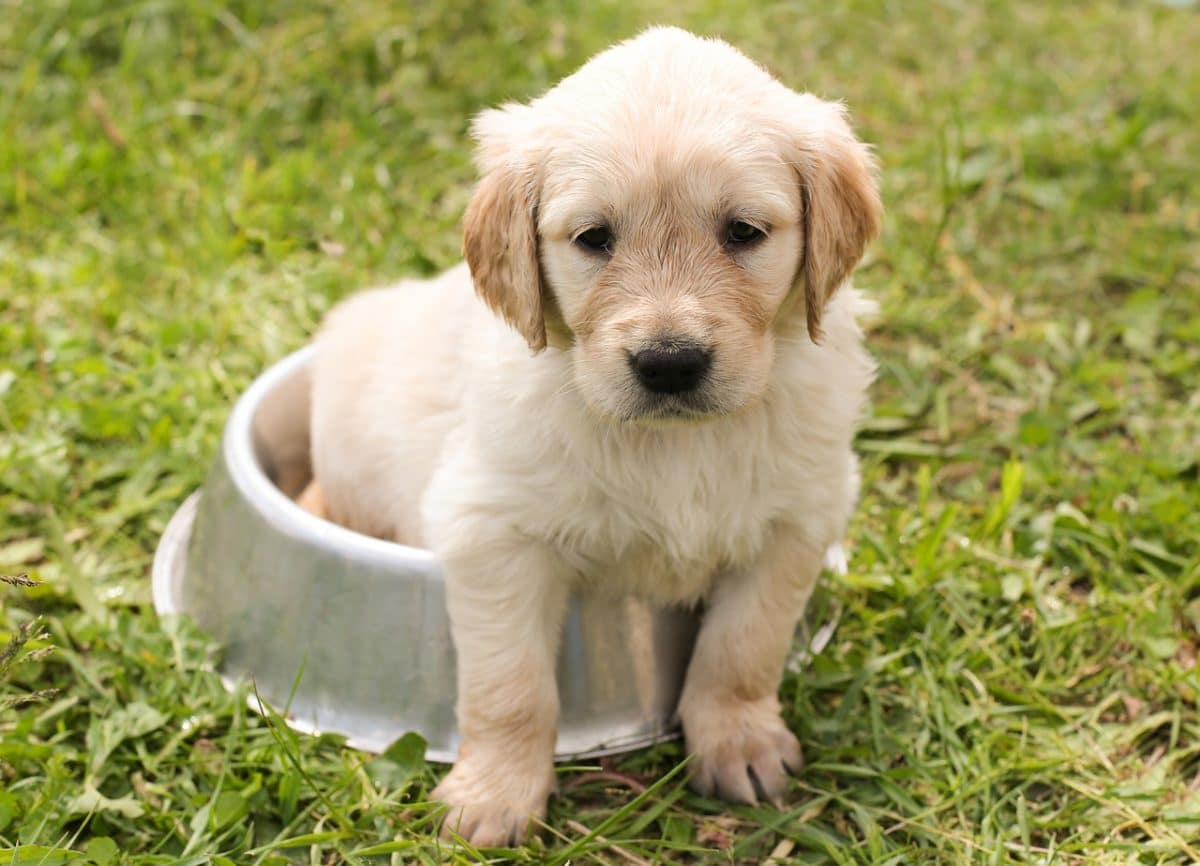If you’re bringing home a new puppy, then congratulations. Puppies can be an exciting and valuable addition to your household, adding an extra dimension of fun and playfulness.

Image by Moshe Harosh from Pixabay
Getting a puppy to settle in, however, can be a challenge. Puppies spend the first few weeks of their lives with their mother and the rest of the litter. It can be difficult for them, therefore, to suddenly have to change location and go and live with new owners. The change in environment and people is disruptive and sometimes overwhelming. A new puppy might be scared by all of the new sensations that they experience.
It’s your job as their new owner to make sure that your home is as friendly to them as possible. You want to make sure that you do everything you can to make them feel welcome and snuff out any problem behaviors before they become ingrained. The first few weeks and months that you have your new pup are vital and will determine the type of dog that they become in the future.
Being the owner of a new puppy is a little bit like being a parent for the first time. You don’t always know what to do and sometimes have to rely on instinct. Reading books on the subject is excellent, but there’s no substitute for the real thing. The same applies to owning a new dog. Just like a baby, a dog can’t verbalize its needs. More often than not, you have to guess.
What’s interesting, however, is how you develop a kind of instinct and feel for what they want. Your dog gives you subtle and not-so-subtle cues that you can learn over time. Eventually, you feel confident that you know your dog and can identify when things aren’t quite right.
Helping a pup to settle in isn’t always easy, but with the following ideas and tips, you’re bound to succeed. Take a look at the following tips for bringing home a new puppy.

Image by Chiemsee2016 from Pixabay
Tips for Bringing Home a New Puppy
Create A Cozy, Relaxed Space
Just like people, dogs need downtime. They need a comfortable and relaxed space where they can bed down at the end of a busy day and recuperate. Puppies, just like people, need a place where they can sleep and prepare for the next day.
Some owners put their puppies in dog crates to begin to teach them not to follow their owners upstairs. (You don’t usually want your dog in the bedroom with you). Over time, you can get your puppy used to a dog bed. Sometimes owners place the dog bed inside the crate and then remove it when they’re confident that their will remain in it overnight.
Open Your Puppy Up To New Experiences
If you’ve bought a very young puppy, it’s unlikely that they’ve had many experiences other than spending time with their mother and the other pups. It’s vital, therefore, that puppy owners open their pets up to new experiences, both indoors and out.
The first thing to do is to get your puppy used to experience new and unfamiliar outdoor spaces. You want them to become acquainted with the sights and sounds of being outside. Puppies love to play on the grass, in puddles, and in the mud. While they might create a mess, they must be able to explore their environment, just like people.
Going outdoors also helps get your puppy used to being around other people and dogs. It’s a chance for them to see that the world is much bigger than just their immediate family.
When bringing home a new puppy, ensuring their safety while they explore the outdoors is just as important as keeping your indoor space secure. A GPS dog fence can be a great solution for providing your puppy with the freedom to roam while giving you peace of mind. Unlike traditional fences, a GPS dog fence allows you to set virtual boundaries that keep your pup safe within your yard without obstructing your view. This technology ensures that your puppy can enjoy outdoor playtime, and you’ll receive alerts if they ever venture too far, helping you keep them safe as they adjust to their new home.
Help Comfort And Reassure Them
Puppies can be nervous when they first join your family. When you think about it, this is perfectly understandable. They don’t know who you are or what your intentions towards them might be.
There are a variety of things that you can do to make your pup feel more comfortable and reassured when they first arrive.
- Use pheromone sprays and plug-ins. Dogs operate primarily through their sense of smell. It makes sense, therefore, to adjust how your home smells before they arrive. Companies now make special “pheromone” sprays and plug-ins you can use to enhance your home environment and make it more dog-friendly.
- Get a collar. While you might not think it, dog collars can have a profoundly calming effect on your new pup. It helps give them a sense of stability.
- Put the radio on quiet. The sound of the radio can have a profoundly relaxing effect on your pup. Try putting the radio on at a low volume if you think that your new dog might be distressed or nervous. The sound of the radio gets your dog used to the sound of people and the type of noise that they’ll hear in the human world.
Keep Your New Pup Away From Other Pets
The first interaction between your existing pets and your new pup can be challenging. You never quite know how the event will go. Most of the time, animals will live alongside each other happily, but the initial encounter can be a little scary.
For the first few nights, you want to make sure that your puppy gets used to living with you and the other people in your family. That can be a challenge in itself. Once you’re happy that you’ve bonded, then it could be the right time to introduce them to the non-human members of your family.
You should supervise the first couple of interactions. Your dog will want to sniff your other pets to learn about them. Most of the time, they’ll be cautious, but over time, they should become more relaxed. Older, more experienced dogs are unlikely to be disrupted by the addition of a puppy.
Pay Them Plenty Of Attention And Play With Them
A puppy can be quite timid at first as they explore their new environment for the first time. Slowly, as they begin to understand that they’re not in danger, they’ll start venturing out further.
Most owners begin playing with their pups and paying them lots of attention when they reach the exploration phase. Interacting with your puppy is essential. You want to form a bond from an early age and for them to understand that they’re part of the family.
Grooming your puppy is a great way to build a closer bond with them. The more that they understand that you’re a member of their pack, the more they’ll respect you and feel comfortable in their surroundings.
Eliminate Dangers In Your Home
Puppies are new to the world. Most puppies for sale have only been in it for a few weeks and have known little else other than life in the litter. It’s understandable, therefore, that they won’t know much about the hazards in the modern family home.
The first thing to do is to secure the items in your home that are dangerous to dogs. Chocolate, for instance, is highly palatable for puppies. They will eat as much of the stuff as they can if given the opportunity. Chocolate, however, is dangerous to them and can cause organ failure – not something you want. Other foods that dogs mustn’t eat include onions, garlic, sugary foods, and raw meat from the supermarket.
If your dog likes to put things in their mouths, you’ll also want to keep all loose items off the floor. While things like belts don’t taste good, dogs can end up chewing on them and swallowing them anyway, causing issues further down the digestive tract.
Finally, when you’re bringing home your new puppy, you’ll want to make sure that he or she can’t access dangerous plug sockets or electrical cords. Puppies can sometimes chew through wiring, putting them at risk of a nasty jolt.
Give Your Dog A Choice Of Food
Puppies can be fussy about the food that they eat. Some will only eat the food that they ate while they were still with their mother. Others won’t have had substantial experience with solid food at all.
It’s a good idea, therefore, to provide your new pup with a selection of different types of food to get them familiar with eating in your home. Some dogs don’t find dry food palatable, so you may want to try them on wet food at first. You can also experiment with different flavors to see whether they like one more than the other. In general, dogs love their food, but you could experience issues right at the start.
Getting your new pup to settle in can be a challenge, but with the right approach, it’s actually a lot easier than you think. Most puppies don’t have any special behavioral issues, even though they have individual personalities. Welcoming a new pup to your home is very similar to inviting anybody to stay with you. So long as the puppy feels relaxed and not in any danger, you rarely experience significant issues. Introducing them to things like the outside world and other people from a young age can help them to feel more relaxed as they get older.
Are you planning on bringing home a new puppy?